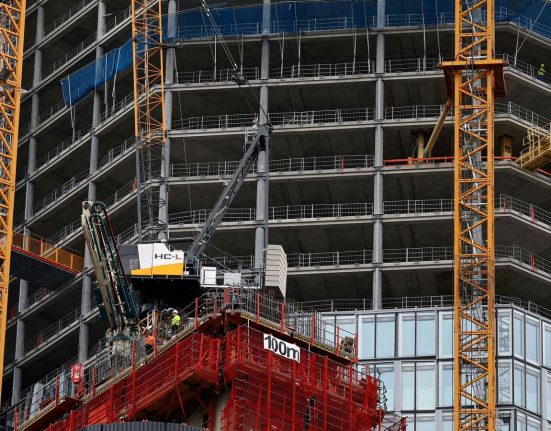Liu Jianguo, a 47-year-old teacher in the second-tier city of Guiyang, considers himself lucky. He lives in a sliver of China where the property market isn’t withering.
“I have friends in the big cities,” he said. “They are aware they’re in a bad place for buying or selling real estate.”
New home prices in China’s 70 big cities fell for a sixth month and values in the secondary market declined the most in nine years. Policy makers are trying out a wide range of measures to stabilize the vital sector—with many experts predicting underwhelming results.
China’s priciest housing markets, Beijing and Shanghai, relaxed homebuying policies to boost the market. Both cities lowered down-payment ratios, removed the price cap for homes, and reduced taxes for sellers.
Beijing now has a slimmer 30% down-payment ratio for first-home buyers, while Shanghai has a flat 30% ratio for first homes and 50% for all second homes.
Advertisement – Scroll to Continue
The changes aim to stimulate buyer interest and follow a series of measures implemented since August to revive the housing market, which saw a particularly steep fall in October amid a two-year slump.
The government is now reportedly set to support financing for larger developers and improve funding access for certain private developers, according to various media, citing unidentified sources. The theory is that if selective lending support and direct government interventions restore confidence in the sector, risks within banks’ existing property loan books could ease.
This could provide developers, particularly private ones, with additional time to adapt to volatile market conditions.
Advertisement – Scroll to Continue
China’s central government is reportedly creating a list of 50 developers to guide banks in increasing financing for them, according to Chinese media. This includes specific requirements for banks to expedite lending to the property sector and promote equal treatment of state-owned and privately owned developers regarding underwriting standards.
Experts say the impact of this relies on banks’ implementation. This isn’t the first time in recent years authorities have urged banks to up loans to developers, with underwhelming lending results.
Meanwhile, commercial banks that are weakly supervised will use their balance sheets to participate only in safer projects with sufficient residual value, analysts said.
Advertisement – Scroll to Continue
“Our base case remains that banks lack strong incentive to extend new credits to projects with inadequate collateral, especially those built by non-state-owned developers,” Fitch Ratings analysts said in a recent note.
“As such, we expect banks to stay highly selective towards new loans even under the potential requirements.”
Not all observers are pessimistic. “If the Chinese government can continue to address structural issues quickly, prevent excessive reliance on policy stimulus, and maintain the confidence of the private sector and the economy, the country should not see a prolonged period of stagnation like the one Japan experienced,” said Kim Eng Tan, managing director, sovereign ratings, Asia-Pacific at S&P Global Ratings.
Advertisement – Scroll to Continue
Others see a bigger problem, one that could take as many as six years to resolve: unfinished residential properties. The number of unfinished presold homes is 20 times the size of developer Country Garden as of the start of the year, according to a Bloomberg analysis.
And analysts said Beijing’s ambitious funding plans—policy banks will largely take the lead on this, using a 200 billion yuan ($28 billion) special fund—aren’t structured to adequately address the problem.
“However one slices the data, the existing excess supply in the market is likely to take at least another four years to unwind, absent a meaningful pickup in demand,” Oxford Economics lead economist Louise Loo said in a recent report.
Advertisement – Scroll to Continue
“Increasing supply coming from secondary market transactions—as households, worried about depleting profits from price declines, sell their second or third homes—is an additional drag to this process,” she said, adding that “developers’ inventory is far too large for households to absorb quickly.”
The sector’s struggles are hitting investors, homeowners, and the offshore bond market. The epic bear run for Chinese property stocks is nearing a 14-year low.
But perhaps most critical is reduced funding for often-indebted local governments, which rely on land transfer sales for revenue. Fewer home sales, less revenue.
Taken together, China’s overall GDP growth is likely to slow to 4% in 2024 and 2025, Moody’s analysts said in a report this month.
“To offset the diminished role of the property sector over the medium term, substantial and coordinated reforms will be needed for consumption and higher value-added production to drive growth,” it said.
But that solution too has its problems. An estimated 70% of China’s household assets are parked in property. Convincing people to spend and revive the economy when their core savings are being wiped away is a hard sell.
“I’m too old to go investing elsewhere,” said recent Beijing retiree Liu Ming. “But I’m telling my daughter: ‘Don’t put all your eggs in property.”
Write to editors@barrons.com







